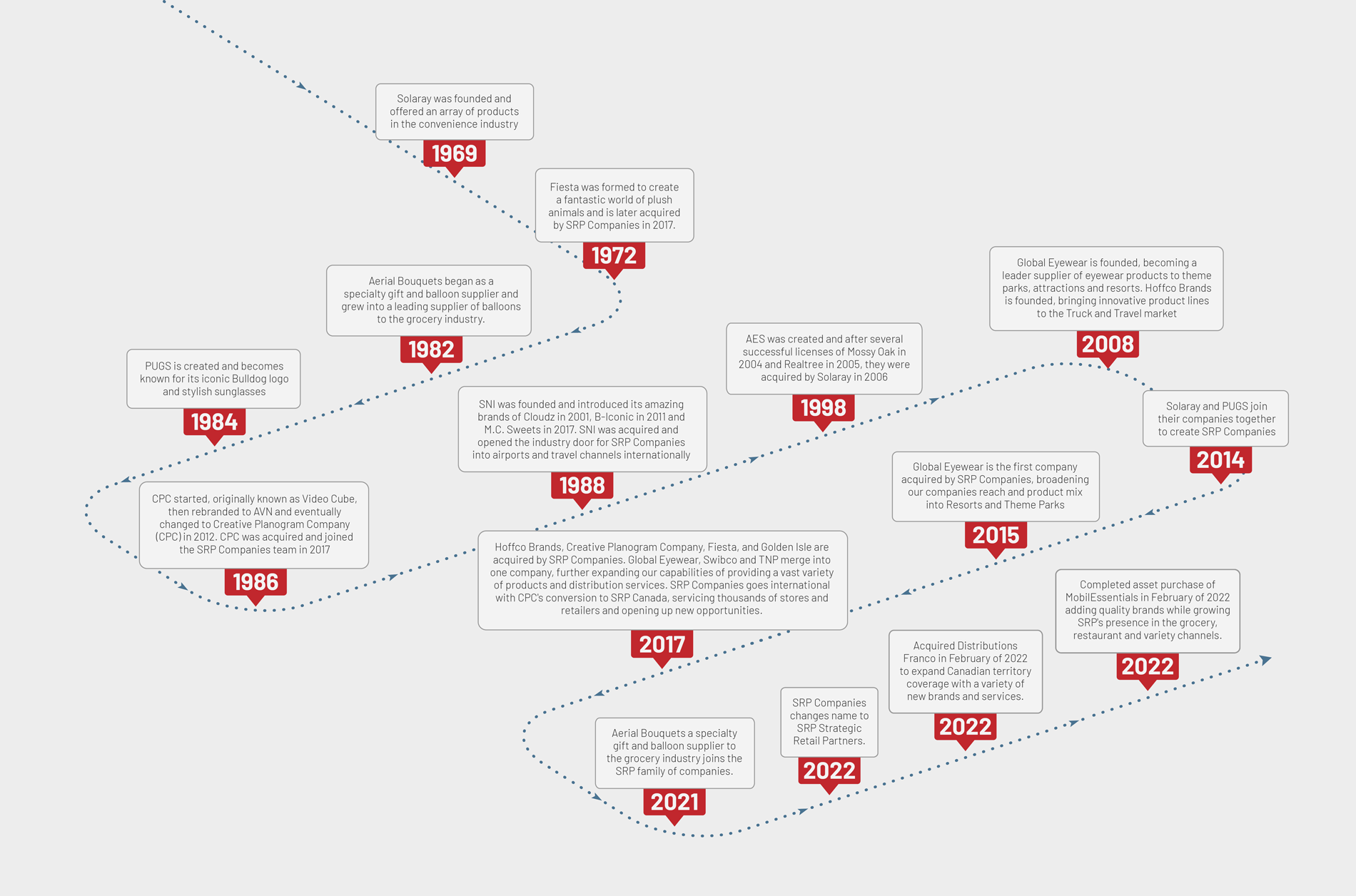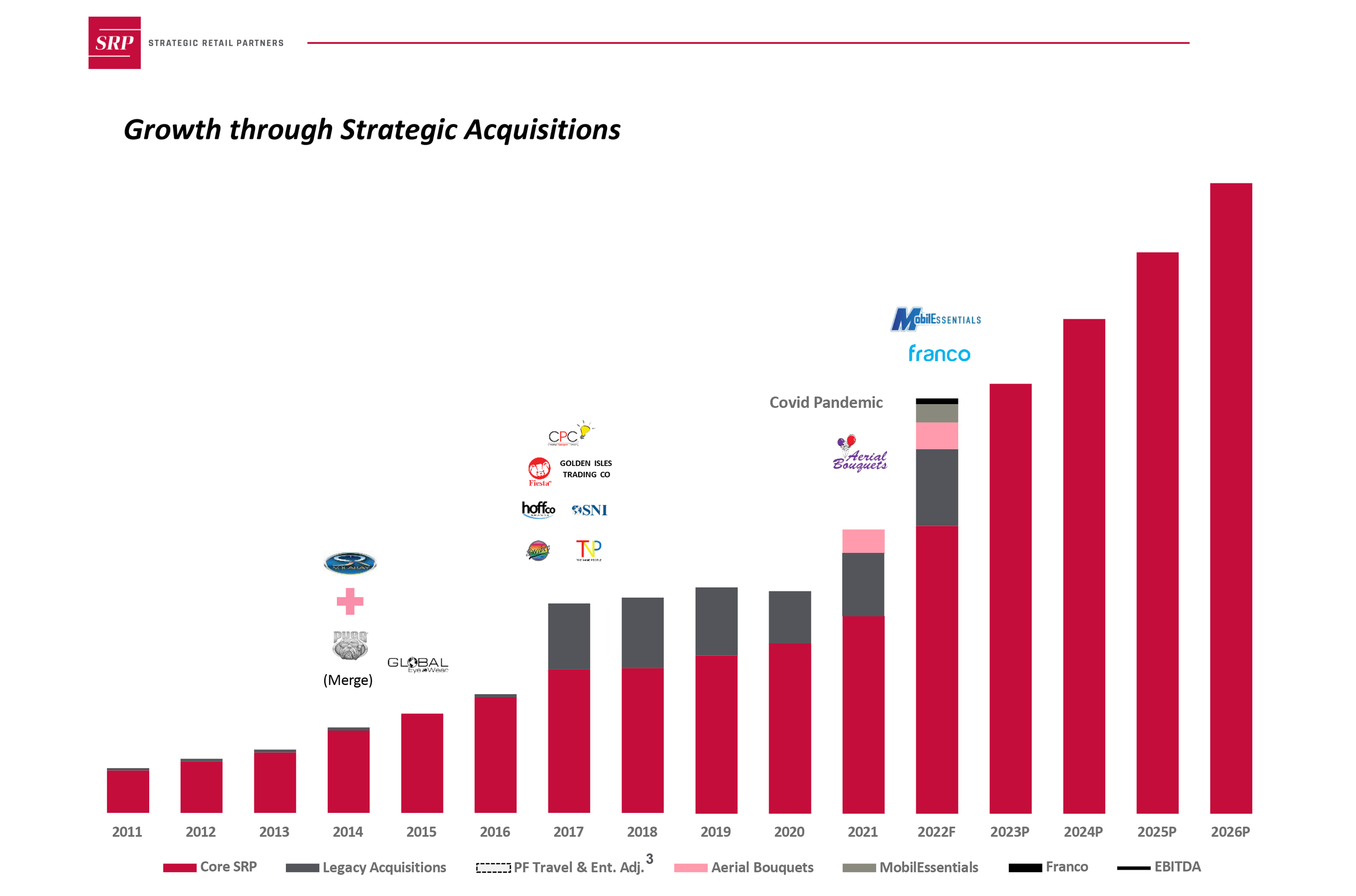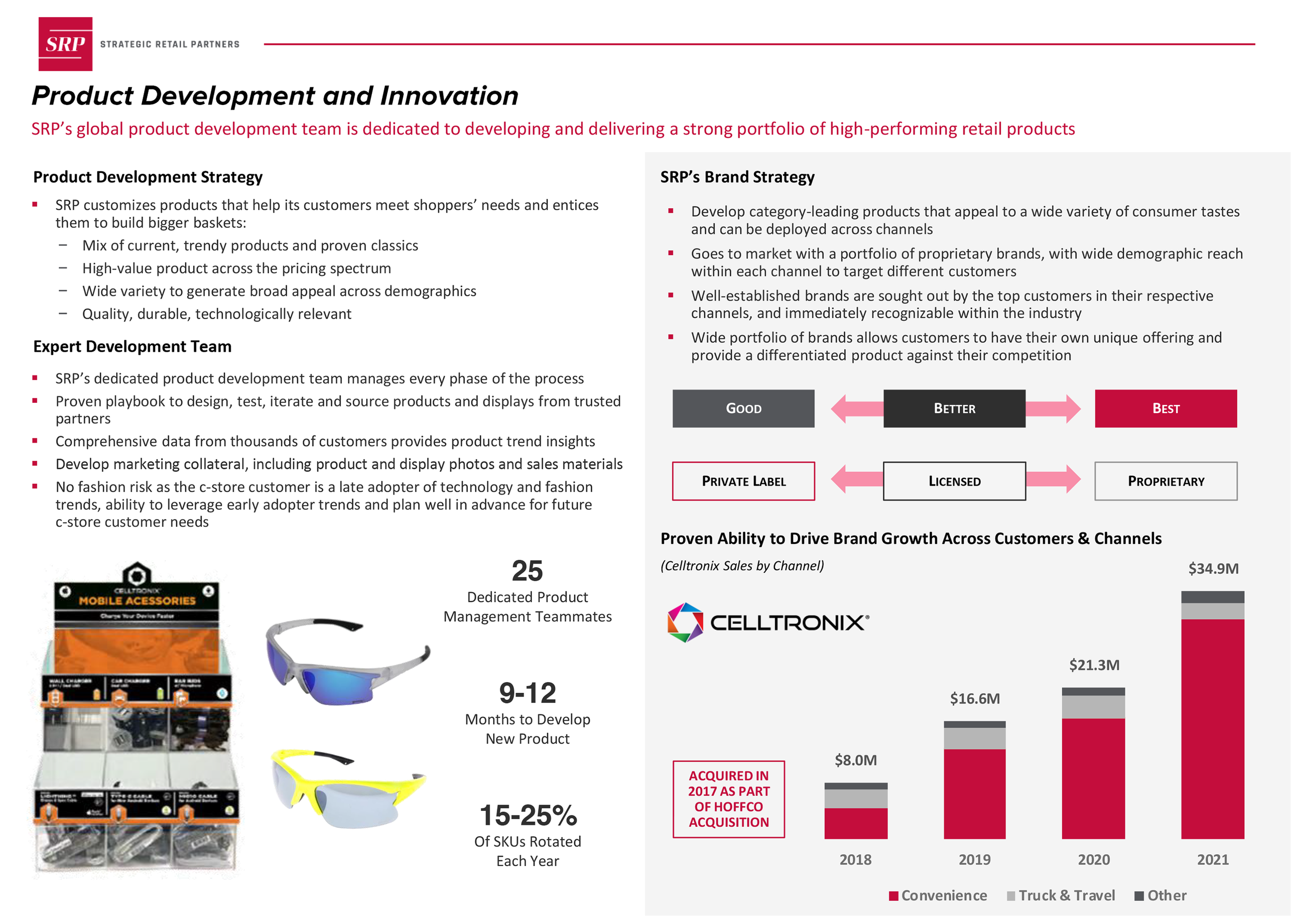Strategic Retail Partners
Optimizing for Growth through Innovation and Portfolio Strategy
Strategic Retail Partners (SRP) has grown from a regional sunglasses distributor into a market leader in convenience stores and retail merchandise. Over the past decade, SRP’s aggressive acquisition strategy—adding seven companies in 2017 and three more by 2021, including MobileEssentials and Aerial Bouquets—diversified its product portfolio into electronics, travel accessories, plush toys, and more. Today, SRP serves over 56,000 retail locations across the U.S. and Canada with annual revenues exceeding $400 million.
Despite this expansion, SRP faced challenges consolidating its acquisitions. Fragmented operations, unaligned supply chains, disparate ERP systems, and inconsistent branding limited its ability to fully capitalize on its scale. Additionally, category complexity across core products like electronics, travel, and plush toys created inefficiencies in inventory management and merchandising. Recognizing the opportunity for transformation, SRP launched a 2022 initiative focused on unifying its product strategy, improving category management, and leveraging merchandising and planogram solutions to achieve operational excellence and market leadership.
Strategic Initiatives and Implementation
Accelerating Product Innovation
Dedicated Innovation Resources: SRP established innovation teams for its key product categories. For example, the Cloudz travel accessory brand introduced multifunctional and sustainable travel pillows, cutting product development cycles by 30% and enhancing appeal in travel-focused retail channels.
Agile Methodologies: Rapid prototyping and iterative development allowed SRP to respond to shifting consumer trends, reducing time-to-market by 25% across categories such as electronics and plush toys.
Customer-Centric Design: Consumer feedback sessions shaped product enhancements, such as ergonomically designed electronics accessories, boosting customer satisfaction scores by 20%.
Optimizing Product Portfolio
Portfolio Rationalization: By eliminating 30% of underperforming SKUs, SRP focused on high-margin, high-growth categories like work gloves and travel items, achieving a 15% increase in category profitability.
Dynamic Pricing and Bundling: Using data analytics, SRP introduced “Good, Better, Best” product tiers and bundle pricing strategies, driving a 12% increase in average transaction value.
Category Management, Merchandising, and Planograms
SRP took an integrated approach to improve its in-store presence and category management effectiveness:
Planogram Optimization: SRP’s proprietary analytics informed the development of 350+ custom planograms annually, tailored to store layouts and regional customer demographics. This ensured optimal product placement, maximizing profit per square foot and reducing inventory gaps.
Merchandising Excellence: Field teams deployed to retail locations provided real-time inventory monitoring, shelf replenishment, and seasonal product resets. These efforts improved on-shelf availability and streamlined labor requirements for retail partners.
Data-Driven Category Management: Leveraging sales and trend data from over 56,000 locations, SRP curated tailored product assortments to meet specific channel needs (e.g., convenience stores, grocery, and truck stops). This approach aligned inventory with consumer behavior, driving higher customer engagement and retention.
Integrated Approach and Best Practices
Cross-Functional Collaboration: SRP brought together product, marketing, and sales teams to ensure seamless product launches and rebranding efforts. For example, the rebranding of Cloudz included refreshed packaging and a digital marketing campaign that enhanced brand recognition in travel channels.
Technology-Enabled Decision Making: Advanced analytics provided insights into product sales performance and consumer preferences, enabling rapid pivots to optimize inventory and merchandising strategies. These insights reduced inventory carrying costs by 10% and improved service levels by 15%.
Comprehensive Metrics Tracking: SRP measured performance through innovation metrics (e.g., revenue from new products), portfolio metrics (e.g., SKU profitability), and operational metrics (e.g., improved inventory turnover ratios).
Summary
SRP’s transformation highlights how integrating innovation with category management and merchandising can turn operational challenges into strategic advantages. By aligning its product strategy with consumer needs and leveraging advanced analytics, SRP has positioned itself as a market leader while setting a blueprint for scalable, sustainable growth.
Key Results
Revenue Growth: A 25% increase in revenue from high-margin categories like electronics and travel accessories.
Profitability: SKU rationalization and category-specific pricing strategies delivered a 15% boost in profitability.
Operational Efficiency: Integration of supply chain systems reduced inventory costs by 10% and procurement expenses by 8%.
Lessons Learned
Category Management is Strategic: Tailored assortments and curated planograms improved sales and strengthened partnerships with retail customers.
Data-Driven Insights are Critical: Analytics enabled SRP to refine pricing, product placement, and bundling strategies, driving higher margins and operational efficiency.
Unified Operations are Essential: Centralizing processes and aligning product strategies across acquisitions unlocked scale advantages and operational cost savings.
In-Store Execution Drives Results: Merchandising excellence ensured consistency and quality at the shelf, enhancing the consumer shopping experience.
Author
Author: Daniel Reilly
General Manager, Konsidr
Daniel Reilly is General Manager of Konsidr, a strategic consultancy specializing in aligning business objectives with impactful design and innovation. With over 25 years of experience in consumer goods and strategic planning, Daniel has led initiatives that drive sustainable growth, operational excellence, and brand innovation. He has built and executed strategies for billion-dollar portfolios, developed transformative go-to-market plans, and fostered high-performing teams. As a champion of data-driven insights and customer-centric design, Daniel continues to deliver value through creative solutions that amplify brands and fuel long-term success.









